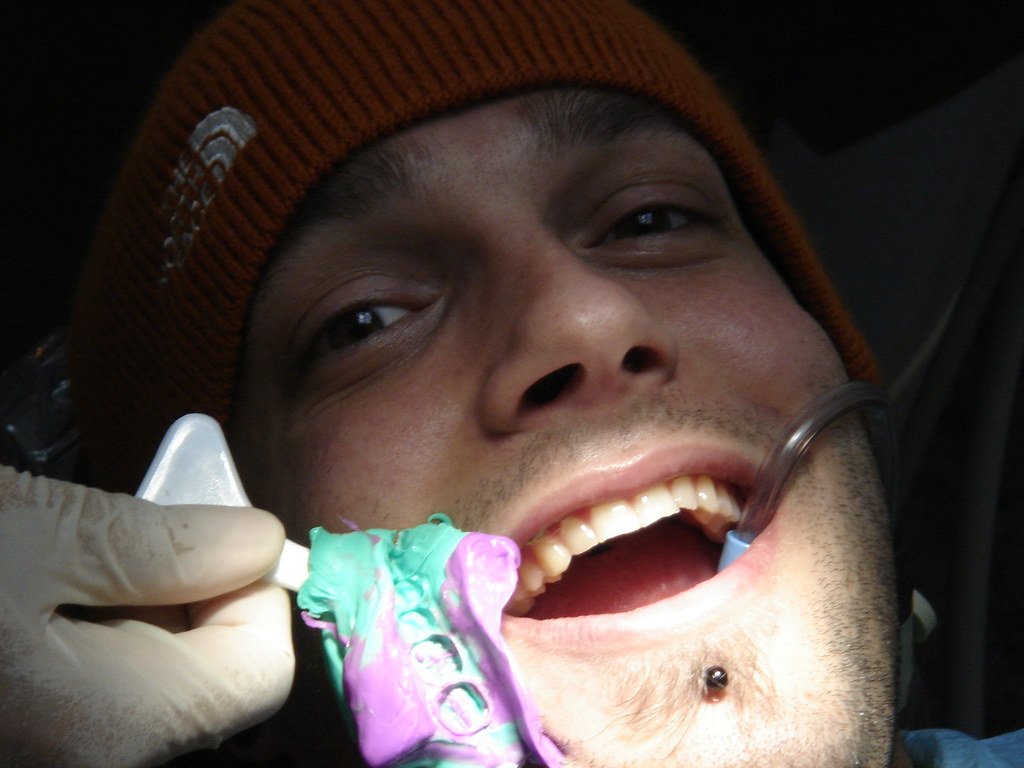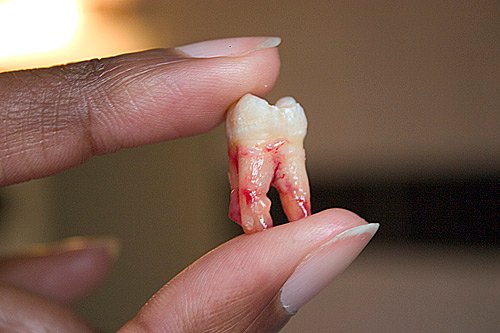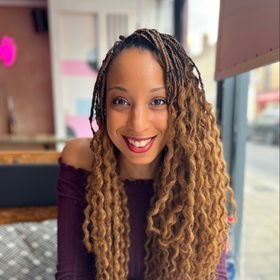Root canal treatment is a dental procedure that is designed to remove infected or damaged pulp (soft tissue) inside a tooth, in order to save the tooth from extraction and prevent the spread of infection to surrounding tissues. The pulp, located in the center of the tooth, contains blood vessels, nerves, and connective tissue. When the pulp becomes infected or inflamed due to tooth decay, cracks, chips, or trauma, it can cause pain, sensitivity, and swelling.
Root canal treatment involves removing the infected pulp, cleaning and shaping the root canals, and filling the resulting space with a biocompatible material to prevent further infection. Root canal treatment is a critical procedure that can save a natural tooth and restore its function, and prevent the need for more extensive and costly dental work in the future.
Why Do I Need A Root Canal?
You may need a root canal if the pulp of your tooth has become infected or inflamed due to tooth decay, cracks, chips, or trauma. If the infection or inflammation is left untreated, it can spread to the surrounding tissues and cause serious complications, such as abscesses, bone loss, and tooth loss. In addition, the symptoms of an infected or inflamed pulp can be quite painful and disruptive to your daily life, and may include:
- Severe toothache that is constant or worsens with pressure
- Sensitivity to hot or cold temperatures
- Swelling or tenderness in the gums
- Discoloration of the tooth
- Bad taste in the mouth or bad breath
What Is The Procedure For Root Canal? Step By Step Guide

The procedure typically involves the following steps:
- Anesthesia: Before the root canal procedure begins, the dentist will numb the affected tooth and surrounding area with a local anesthetic to ensure that you are comfortable throughout the treatment.
- Accessing the Tooth: The dentist will create a small opening in the top of the affected tooth to access the infected or damaged pulp.
- Removing Infected Tissue: Using special dental instruments, the dentist will carefully remove the infected or damaged pulp from the tooth.
- Cleaning and Shaping the Root Canals: The dentist will then use small files to clean and shape the root canals inside the tooth, removing any remaining infected tissue and smoothing the walls of the canals.
- Filling the Canals: Once the canals are cleaned and shaped, the dentist will fill them with a biocompatible material, usually a rubber-like substance called gutta-percha.
- Sealing the Tooth: The opening in the tooth is then sealed with a temporary or permanent filling to prevent bacteria from re-entering the tooth.
- Restoring the Tooth: Depending on the extent of the damage to the tooth, the dentist may place a crown or other type of restoration to protect and strengthen the tooth.
- Follow-up Appointment: After the root canal procedure is complete, the dentist will schedule a follow-up appointment to ensure that the tooth is healing properly and to monitor your progress.
Overall, a root canal procedure is a highly effective way to save a damaged or infected tooth and restore your oral health. While the procedure may sound intimidating, modern techniques and anesthesia make it a comfortable and relatively pain-free experience for most patients.
How Long Does It Take For A Root Canal To Fully Recover?
The recovery time after a root canal procedure can vary from person to person, depending on a variety of factors, including the severity of the infection or damage to the tooth, the individual’s overall health, and how well they follow the post-treatment care instructions.
In general, it may take a few days to a few weeks to fully recover from a root canal procedure. During this time, you may experience some sensitivity or discomfort in the treated tooth, which can typically be managed with over-the-counter pain relievers and good oral hygiene practices.
It is also important to avoid chewing or biting the affected tooth until it is fully healed and to follow any dietary restrictions or other instructions provided by your dentist. Additionally, you should maintain good oral hygiene by brushing and flossing regularly, and attending any follow-up appointments with your dentist to monitor the healing process and ensure that the tooth is fully restored to its function and strength.
With proper care and maintenance, a tooth that has undergone a root canal procedure can last a lifetime, and the vast majority of patients experience a successful recovery with minimal discomfort or complications.

Tips to Minimizing Discomfort After Root Canal
Here are some tips that may help minimize discomfort after a root canal:
- Take over-the-counter pain medication as directed by your dentist.
- Apply an ice pack to the affected area for 10-20 minutes at a time.
- Avoid chewing on the side of the mouth where the root canal was performed.
- Stick to soft foods and avoid hard or crunchy foods that may irritate the treated tooth.
- Practice good oral hygiene, including brushing and flossing regularly to prevent infection.
- Follow your dentist’s instructions for any prescribed antibiotics.
- Rest and avoid strenuous physical activity for the first few days after the procedure.
- Attend any follow-up appointments with your dentist to ensure proper healing.
It’s important to note that some discomfort after a root canal is normal and may last for a few days. However, if you experience severe or prolonged pain, swelling, or other symptoms, be sure to contact your dentist for further evaluation.
What To Expect From Root Canal Before And After

Before Root Canal:
Before a root canal, you can expect to have a consultation with your dentist or endodontist to discuss the procedure and any questions or concerns you may have. You may also need to take antibiotics or pain medication prior to the procedure if there is an active infection. During the procedure, you can expect to be numbed with local anesthesia and to feel little to no pain. The infected or inflamed pulp will be removed, the tooth will be cleaned, and then filled and sealed. After the procedure, you may experience some tenderness or sensitivity for a few days, but this should subside over time.
After Root Canal:
After a root canal, you can expect to follow some aftercare instructions, such as avoiding chewing on the affected tooth until it is fully restored with a permanent filling or crown. You may also need to take over-the-counter pain medication to manage any tenderness or discomfort. You should continue to practice good oral hygiene by brushing and flossing regularly, and you should schedule follow-up appointments with your dentist or endodontist to monitor the healing process. In most cases, a root canal is a successful procedure that can save a damaged or infected tooth and restore it to normal function.
FAQs
Is a root canal a major surgery?
No, a root canal is not considered a major surgery. It is a common dental procedure that involves removing infected or damaged pulp from a tooth and sealing it to prevent further infection. While it may involve some discomfort and may require multiple appointments, it does not typically require hospitalization or major surgery.
Is root canal work painful?
Root canal work can be uncomfortable, but modern techniques and anesthesia can greatly minimize pain during the procedure. After the procedure, some tenderness and discomfort is normal for a few days, but this can typically be managed with over-the-counter pain medication.
Why do root canals take 2 or more visits?
Root canals typically take two or more visits if the tooth being treated has a more complex structure or if the infection is severe. During the first visit, the dentist will remove the infected or inflamed pulp, clean out the inside of the tooth, and possibly place a temporary filling. During the subsequent visit(s), the dentist will complete the procedure by filling and sealing the tooth to prevent further infection. In some cases, additional visits may be necessary to ensure the tooth is healing properly.
What is an alternative to a root canal?
There are a few alternatives to a root canal, depending on the individual case. One alternative is an extraction, which involves removing the infected or damaged tooth. Another option is pulp capping, a procedure in which a medicated material is placed over the exposed pulp in the hopes of allowing the tooth to heal itself. However, these alternatives may not always be the best option and should be discussed with a dental professional to determine the most appropriate treatment.
Conclusion
The root canal is a common dental procedure used to treat infected or damaged teeth that can save a tooth from extraction. The procedure typically takes one to two appointments, and recovery time varies depending on the extent of the infection and individual healing. Following a root canal, it is important to practice good oral hygiene to prevent further infection or damage to the treated tooth. If you are concerned about the need for a root canal or have questions about the procedure, consult with your dentist to discuss your options and develop a treatment plan that is right for you.

I’m Eshé the lady behind the blog. That’s me cooking on the set of The Hairy Bikers. I LOVE food and I don’t mean I really like it. I mean my whole world revolves around it.

